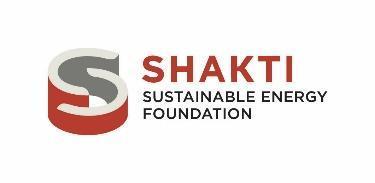
3 minute read
3.3 Evaluating the efficacy of Transportation Regulatory Environment
The regulator acts as market referee and needs to balance competing wants from service providers, commuters, and Government agencies. Independence is crucial, to ensure that the regulator acts objectively, impartially and consistently. In order to keep the office of the regulator independent, the following factors should be kept in mind during the design stage:
Structural factors
Advertisement
No involvement in running mobility services Transparency and accountability Independent committee to pick regulator Clearly stated qualifications
Financial factors
Financial independence
Staff Behaviour
Clear roles Statement of expectations on staff conduct Conditions on employment pre and post regulatory stint to prevent revolving door
Research has shown that in addition to features of institutional design,
independence of the regulator is ensured by developing a culture of independence in the office of regulator (OECD 2016).
The following section lays out a template to evaluate current regulatory structures in cities and can be used to monitor the proposed Sustainable Mobility Regulator’s office as well.
3.3 Evaluating the efficacy of Transportation Regulatory Environment
An important part of the reform is setting up a framework to evaluate the efficacy of the mobility regulator- both the institutional structures, as well as the outcomes for the city’s residents.
The metrics to evaluate institutions have been developed under the Transport Governance Initiative (TGI) Toolkit (Transport Governance Initiative 2018). The toolkit provides a framework for evaluating the quality of transport governance in Indian cities. Elements have been added to this framework to evaluate outputs -efficiency, affordability, environmental impact of a city’s mobility services.
This framework can be used to evaluate the quality of governance, as well as the outcomes in the selected city, to provide a clear picture of the strengths, as well as lacunae in the city’s transport governance.
1. Evaluating institutions

The TGI toolkit evaluates the city’s institutions on the basis of Transparency, Accountability, Participation and Capacity. The table below is a summary from the TGI toolkit. The last row in the table indicates the score to be assigned to each aspect of the city’s institutions, depending on how many criteria are met.
Table 4: Institutional Mapping and Evaluation
Institutions in City
Name of institute
Capacity
Clear mandate Selection of members Tenure of members Access to knowledge
Score Low <1 Medium 2 High>3
Transparency Accountability
Background for policy or policy reform Availability of information in the public domain Meeting schedule, agenda and minutes publicly available Record keeping
Low <1 Medium 2-4 High>4 Frequency of policy reform Comprehensiveness of reforms Policy process timeframe Setting of the agenda Conduct of meetings Holistic policy consideration Integration with other policies Setting policy outcomes Implementation of policy
Low <2 Medium 2-5 High>5
Source: (Transport Governance Initiative 2018) Participation
Requirement for public engagement Clarity of public participation process Quality of participatory methods Inclusiveness of the participatory process Capacity for participatory consultations
Low <2 Medium 2-4 High>4
2. Evaluating impact
The table below can be used to get a snapshot of the cities’ mobility services on the parameters of efficiency, affordability, accessibility and environment friendliness.
Table 3 Framework to Evaluate Efficacy of a City's Transport Governance
Environmental Impact
Public transport Non-motorized transport Accessibility Affordability
Air Quality Index Results of EIA before and after building mobility infrastructure Share of trips using public transport YoY rate of change for past 5 years
Low- less than India average Low- less than India average Share of trips using non-motorized transport YoY rate of change for past 5 years
Low- less than India average Availability and use of dataroadway network, pedestrian and bike paths, public transport network information, commute data, land use data Low- less than India average Cost of public transport as share of household income YoY rate of change for past 5 years

Low- less than India average
High- greater than India average High- greater than India High- greater than India average High- greater than India
average average
Source: MP Ensystems Research, 2018
High- greater than India average
It should be noted that some of these measures are related to specific projects, but the objective is to develop a set of measures that taken together can be used to assess the quality of a city’s mobility institutions and their performance.


